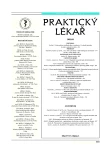The power network frequency magnetic sinusoidal field and tumors of the head and throat
Magnetické sinusoidní pole síťového kmitočtu a nádory hlavy a krku
Před zahájením léčby jsme odebrali periferní krev 60 nemocným s karcinomem hrtanu a hltanu. Z krve byly separovány CD4 lymfocyty. Sledovali jsme jejich schopnost adherence k povrchu v závislosti na přítomnosti antigenu (test inhibice adherence leukocytů – LAI assay). Jako antigen byl použit specifický antigen, vyrobený z příslušné nádorové tkáně (mitochondriální antigen nádorové buňky) a nespecifický antigen, vyrobený ze séra inbredních myší kmene C3H/H2K, infikovaných LDH virem (kapsidový antigen). Výsledky byly hodnoceny pomocí non-adherence indexu (NAI). Pokus byl opakován při expozici substrátu magnetickému sinusoidnímu poli (MSP) síťového kmitočtu o indukci 1 a 10 mT. Výsledky byly vyhodnoceny stejným způsobem a porovnány pomocí t-testu pro 2 nezávislé výběry. Výsledky měření ukázaly, že CD4 lymfocyty získané z krve pacientů s karcinomy hrtanu a hltanu mají, oproti CD4 lymfocytům zdravých lidí, sníženou schopnost adherence k povrchu (vyšší hodnoty NAI). Po expozici MSP síťového kmitočtu se však jejich schopnost adherovat statisticky významně zvyšuje. Za předpokladu, že schopnost adherence lymfocytů je projevem buňkami mediované imunity (CMI), lze konstatovat, že MSP ovlivňuje CMI, a to v případě MSP síťového kmitočtu o indukci 1 i 10 mT pozitivním způsobem.
Klíčová slova:
karcinom hrtanu a hltanu – magnetické sinusoidní pole – test inhibice adherence leukocytů
Authors:
A. Čoček 1; A. Jandová 2; J. Pokorný 2; A. Dohnalová 3; M. Ambruš 4; A. Hahn 1
Authors‘ workplace:
ORL klinika 3. LF UK a FN KV, Praha
přednosta doc. MUDr. Dr. med. A. Hahn, CSc.
1; Ústav radiotechniky a elektroniky AV, Praha, ředitel ing. V. Matějec
2; Fyziologický ústav 1. LF UK, Praha, přednosta prof. O. Kittnar, DrSc.
3; Klinika radioterapie a onkologie 3. LF UK a FNKV, Praha
přednostka MUDr. M. Kubecová
4
Published in:
Prakt. Lék. 2005; 85(12): 690-691
Category:
Of different specialties
Overview
Prior to treatment, we have sampled blood from 60 patients suffering carcinoma of the larynx and pharynx. CD4 lymphocytes were separated from the blood. We have followed up their capacity of surface adherence depending on the presence of antigen (leucocyte adherence inhibition assay). As antigen there served a specific antigen prepared from the corresponding tumor tissue (mitochondrial antigen of the tumor cell) and a nonspecific antigen prepared from the serum of inbred C3H/H2K strain mice infected with LDH virus (capsid antigen). The results were evaluated with the aid of the non-adherence index (NAI). The experiment was repeated under exposure of the substrate to a magnetic sinusoid field (MSF) of power frequency at an induction of 1 and 10 mT. The results were evaluated in like manner and compared through the t-test for two independent series. Results of the measurings showed that CD4 lymphocytes obtained from the blood of patientssuffering carcinomas of the larynx and of the pharynx, as compared to CD4 lymphocytes of healthy subjects, have a decreased capacity of surface adherence (higher NAI values). Upon exposure to MSF of power network frequency their capacity to adhere increased to a statistically significant degree. On presumption that the adherence capacity of lymphocytes is a manifestation of cell-mediated immunity (CMI), it can be stated that MSF influences CMI in a positive sense, namely in the case of MSF of power network frequency at an induction of 1 and 10 mT.
Key words:
carcinoma of the larynx and pharynx – magnetic sinusoid field – leucocyte adherence inhibition assay.
Labels
General practitioner for children and adolescents General practitioner for adultsArticle was published in
General Practitioner

2005 Issue 12
- Hope Awakens with Early Diagnosis of Parkinson's Disease Based on Skin Odor
- Memantine Eases Daily Life for Patients and Caregivers
- Memantine in Dementia Therapy – Current Findings and Possible Future Applications
- Metamizole vs. Tramadol in Postoperative Analgesia
- Metamizole at a Glance and in Practice – Effective Non-Opioid Analgesic for All Ages
Most read in this issue
- Malabsorption syndrome in children, its diagnostics and treatment692
- Idiopathic macular hole - epidemiology, classification, natural course, and therapy
- Hypoxia of the brain
- The port and its role in oncological patients
